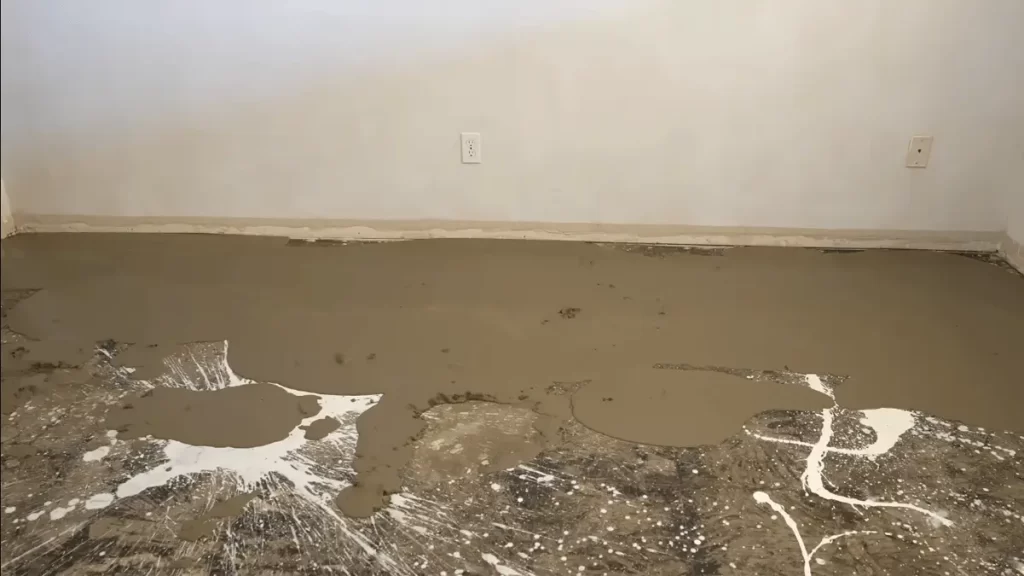How Does Concrete Patch Dry?


How Does Concrete Patch Dry?
A concrete patch serves as a reliable means of remedying repairs on a concrete surface. Whether the issue is a crack in the driveway or a wall repair, one must be well-informed about how the patch dries in order to achieve a long-lasting repair. Patching concrete involves a process of curing, which is the process of drying. Drying is achieved via chemical and physical changes that occur within the material. Now we will take a look at the stages that lead to the curing of a patch.
The Drying Stages of a Patch
Drying starts instantaneously when a patch is applied, where water in the mixture begins interacting with the cement. Hydration is a cement and water mixture and is known as a collection of chemical reactions in a closed system. Instead of simply evaporating, concrete is able to bond aggregates, which results in it achieving strength.
The process of hydration consists of the chemical reaction wherein calcium silicate hydrate (C-S-H) is formed. This compound is directly linked to the strength of the concrete patch. This reaction initiates on the surface and moves inward, which is the reason why the surface of the concrete patch is dry to touch prior to curing completely internally.
The Process of Concrete Patch Drying
Drying of a concrete patch can be classified into many important processes:
1. Setting Stage
Setting stage occurs the very moment the patch of concrete is applied. At this phase, the concrete patch begins its curing process as water in the mixture bonds with the cement. This phase occurs readily for the first few hours after application and is significantly impacted by temperature and humidity.
2. Hardening Stage
The hardening stage is where the patch progresses after the initial setting. The surface is now able to support some light contact, while the material continues to strengthen. At this phase, the patch may look as if it is dry, when in fact the hydration processes are still occurring internally. This stage can last anywhere from 24 to 48 hours.
3. The Curing Stage
This stage is the most important step of the four stages that drying processes have. It is the moment when the concrete patch attains its maximum strength and durability. Curing takes from a few days to over a week, depending on the patch size, type of concrete, and surrounding conditions. Even if the surface feels dry, the patch still requires moisture to ensure proper hydration during this time.
Factors That Impact Drying Time
These are some factors that impact patch drying time as well as curing time:
1. Patch Material Type
Specific concrete patching products differ from one another in term of their composition. Therefore, they all take different time to dry. For instance, quick-drying patches contain additives which allow for repairs to be accomplished in a matter of hours, whereas other patches will need at least 24-48 hours to dry and a week to cure fully.
2. Patch Thickness
This factor works the same way as the previous one, as the thicker the patch gets, the longer it takes to dry. Water also vaporizes and reacts quicker in smaller volumes, so thinner patches dry and cure quicker.
3. Temperature and Humidity
Temperature and humidity are critical to the entire drying method. Dry and warm weather will accelerate surface drying, but too much evaporation will cause curing problems. Meanwhile, cool or humid weather will reduce the evaporation rate and prolong the curing phase with the possibility of further increasing the repair’s strength.
4. Moisture Retention
Maintaining the appropriate level of moisture is essential for reinforcing the patch while it cures. If the surface dries too readily, it will crack and lose strength along with hydration.
Also Read: How Much Do Concrete Blocks Weigh?
Strategies for Succeeding Drying and Curing of Concrete Patch Works
For your concrete patch to dry and cure properly, here are some steps you should follow. First of all, it is very important to keep the area wet throughout the curing phase. You can lightly mist the concrete patch with water or cover it with damp burlap or plastic sheeting. This technique helps in hydration and retention of moisture. Protect the patch from the sun, wind, or heat in order to avoid rapid drying.
These elements can cause the surface to dry too quickly and result in cracks, shrinkage, or a weak finish. Indeed, for optimal results, remember the patch materials have specific drying and curing times, and it is always prudent to follow the manufacturer’s instructions. Process of repair will always be compromised if done in a hurry. Lastly, before steady loads are applied, adequate curing time needs to be allowed. While the patch may be dry on the surface, additional time is often required in order to for the patch to achieve maximum overall strength internally. Because of this, it is ideal to be thorough, as proper curing will help the patch to last longer and remain strong under various conditions and wear. Adopting the stated precautions guarantees a professional-quality repair that will endure weathering and daily use.
A Process of Hydration and Evaporation
Concrete patches dry via a process of hydration and evaporation which, alongside other methods, goes through various stages: setting and curing. Even though the surface of a patch looks dry in a few hours, internal curing takes days to complete for the patch to gain full strength. Types of patch materials, environmental conditions, and thickness of the application all influence drying times.
Adequate curing is paramount to achieving a successful and durable repair. If curing isn’t approached with the utmost care, there may be cracks, weak bonding, or undesirable uneven facades that compromise the repair’s structural integrity. Quick drying products may seem appealing, but these products help minimal while patching units. In such cases, adequate time should be provided for the patch to dry. To achieve the quickest set time, it is advised to follow the manufacturer’s instructions, utilize moisture before applying the patch for maximum effectiveness, and avoid extreme weathering conditions during the curing phases.
In the process of fixing a concrete surface such as a driveway or wall, it is important to ensure that a patch is cured correctly. Doing so will not only save you from maintenance efforts in the future, but it will also ensure that the concrete can withstand harsh environmental conditions. This process requires a lot of patience and attention to detail as it will determine the quality and level of durability in the surface.

